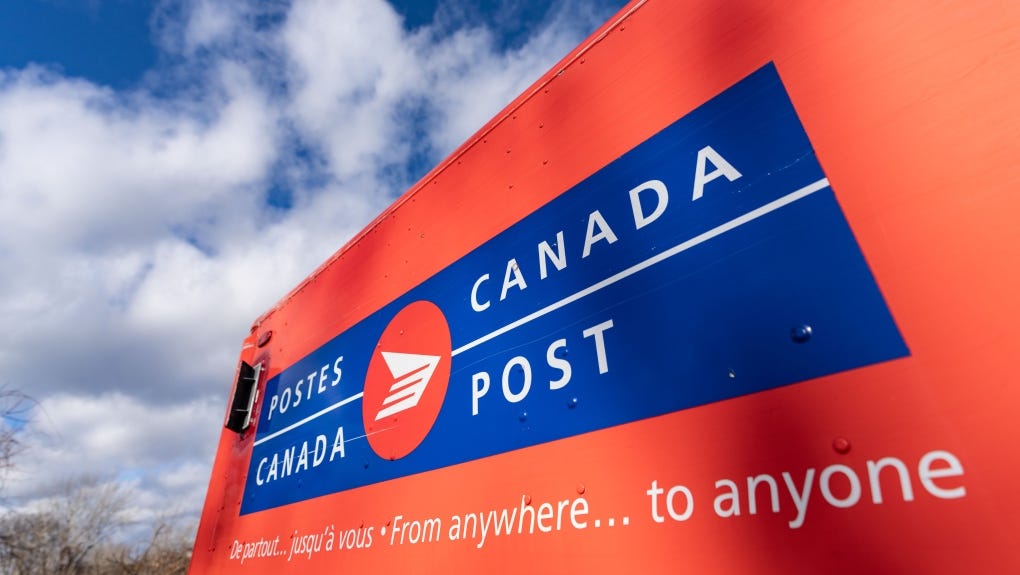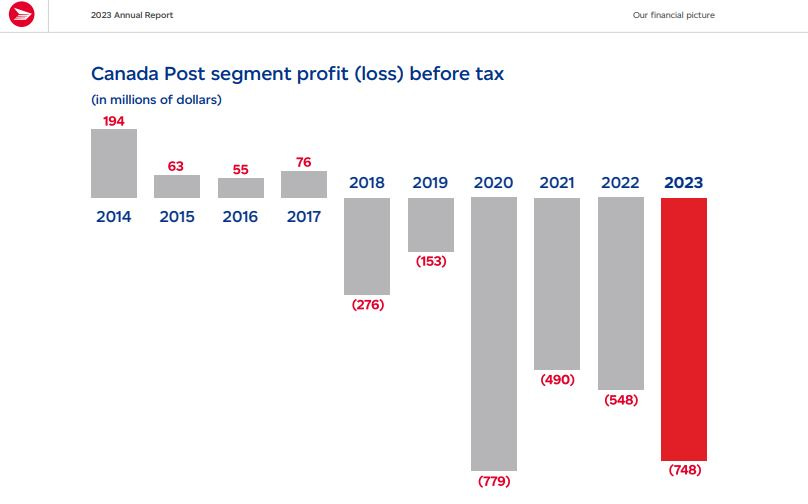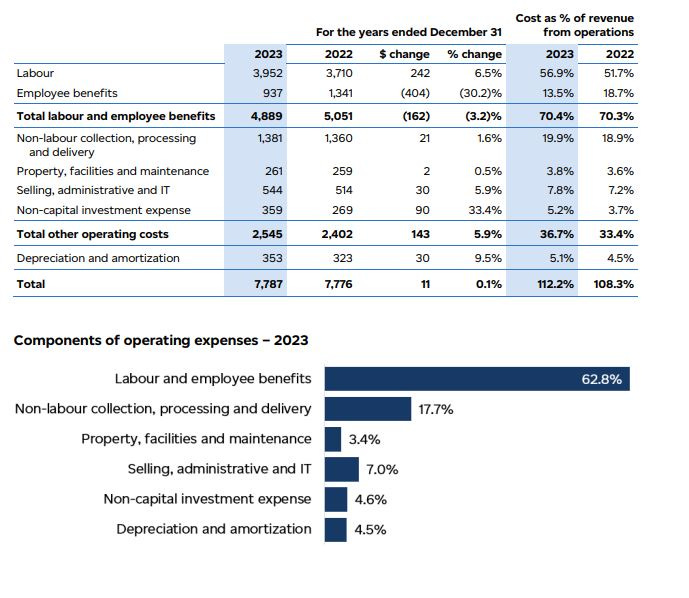Canada Post Strike - A Lesson In Business, Mediation, and Government Intervention
On November 15th, 2024 Canada’s largest mail carrier stopped all operations and declared a nationwide strike. The CUPW had long been negotiating deals for its workers before the strike, but did not go public until recently and forcing mediation to step in. The strike quickly became a growing concern for all Canadians, and we’re going to dicuss how it directly affected both the business and citizens of the country.
So first of all, how does Canada Post operate? Well it’s not a private business since it has one single shareholder, but it’s also not a publicly traded company and cannot be found on any stcok exchanges. So what exactly is it? Well, in Canada it’s described as Crown Corporation. This means the company will act similarly to a private company with similar positions such as the CEO or CFO, but the sole shareholder of the company is the Government of Canada. The company runs on the revenue produced, but they are allowed to ask for financial help at any point. This was determined in the 1980s when the government declared Canada Post a crown corporation and removed the post office as a branch of government. This guaranteed access to postal service across Canada regardless of location.
So what just happened? Well during November, the union representing the workers at Canada Post declared a strike involving around 55,000 workers across the nation and all mailing operations were put to a halt until the demands were met. The union and Canada Post negotiated on several topics, and some of the original demands of the union included:
24% wage increase over 4 years
Enhanced benefits for medical, disability, etc.
Protection against advanced technology innovations
Both sides have moved on their demands, with the union going down to 19% increase in wages over 4 years as their main focus. The company has said the demands remained too far apart and continued negotiations in the coming weeks.
Fast forward to now, and the Labour Minister told the CIRB to order all postal workers back to work. Both sides were heard to see if any progress was made, however no deal was reached and so all Canada Post workers were ordered back to work on December 17th, 2024.
Canada Post Business Model
So why is Canada Post so adamant about not providing these demands to workers? It seems reasonable right? Well that very well may be true, however Canada Post has been operating at a net loss since 2018. This means that in the past 6 years or so they have made less than 0$ in profit and have been dipping into cash to keep afloat.
As you can see by their 2023 annual report, they last made a profit in 2017 and it was only $76 Million compared to -$748 Million in 2023. The biggest factor in this decline is a signifcant drop in letter mail and subsequently letter mail revenue. From 5.5 Billion Letters in 2006 to just 2.2 Billion in 2023. As the country is switching major contact to online, and all documents and statements to digital, there’s less and less paper mail being sent each year.
There’s also continually more and more addresses being covered in Canada which simultaneously increases delivery costs every year. With less mail and more addresses, the financials will continuously decrease over time. Parcels on the other hand continuously grow, however Canada Post’s stake in that market is lowering. Competitors such as FedEx and UPS are on the rise and operate a more profitable business because of more expensive shipping costs.
Canada Post however is the only company that will deliver to all Canadians regardless of location (this includes all rural Canadians and those far north). This means even if delivery is costing more then what they get paid, all Canadians get access to affordable postal service. This means Canada Post may not actually be charging the proper cost of shipping, and therefore continually leading to lower revenue and more expenses.
Funnily enough, about 25% of the revenue generated from the company comes from the majority owned Purolator. This segment of the company is actually profitable, and brings in a significant profit while only being a portion of the company’s holdings
They also own a smaller company called SCI which is a supply chain solutions, and operates at a profit but not significant enough to turn the tide in their favour. Neither Purolator or SCI are producing large enough revenue to help offset the loss Canada Post receives, however it does help.
Strike Impact
So why is what the CUPW asking for seem impossible for the company? Well thats largely because over 60% of the expenses for the company are from labour and benefits. The rest of the expenses such as loans, properties, depreciation, etc. make up less then 40% of the total amount. The expenses also total more than 100% of revenues and continues to get worse, which is why they operate at a loss.
This is why the demands seem unreasonable in the eyes of Canada Post’s eyes. The union is proposing to be paid millions more in wages, and this will only drive the company deeper into the ground. If they cannot find a way to increase revenue, decrease expenses all while trying to maintain fair payment for workers then they will either have to slowly collapse or rely on government financial aid.
Government Intervention
With such a massive difference in opinions between the union and the company, the government eventually decided to step in. The labour minister told the CIRB to determine if a resolution was possible, and if not then to order workers immediately back to work. No solution was found, and so all Canada Post workers were forced to work on December 17th, 2024. So what does this mean now?
The strike ended up causing huge damage to all Canadians. Many businesses couldn’t make a profit during Christmas time, many even went out of businesses, charities lost over 50% of donations, there was no holiday delivery for family members, people didn’t get passports, important packages couldn’t get delivered, and more. There was over $1 Billion in losses amongst Canadians and it was felt nationwide. So was this strike worth it for the union? The damage is already done, and with so many people deciding whether to even use Canada Post for letter mail, the situation may only get even worse.
The workers are no longer allowed to strike until May 2025, but are they going to again? The union used the leverage of Christmas time to have the upper hand, but it only ended not in their favour. Any new strike may no longer have the same effect, and the company will only be able to offer them less if they can’t find ways to increase profit.
Was the government right in its decision to end all striking activity? Well that’s for you to decide. Given the company is a crown corporation, the sole shareholder of Canada Post is the federal government, and therefore has interest in keeping business going. However it must also decide if it cares about Canadians and Canadian workers just as much as the company itself.
What happens next remains to be seen, but for now the public may have shifted its perspective on relying on Canada Post and may try to find other alternatives if this were to happen again. As for now, we will see how Canadians continue to utilize Canada Post or if they find other alternatives.
As always, do your research and thanks for reading!
This is not and never will be financial advice. This is for educational purposes only, and please treat it as such.









